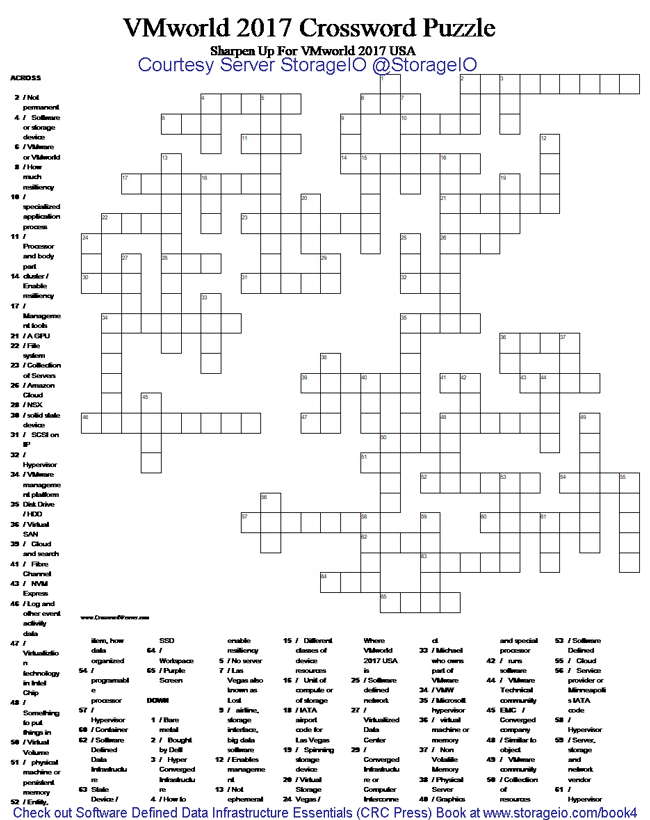Hot Popular New Trending Data Infrastructure Vendors To Watch

Updated 1/21/2018
A common question I get asked is who are the hot popular new trending data infrastructure vendors to watch. This post looks at some data infrastructure vendors to watch and keep an eye on.
Keep in mind that there is a difference between industry adoption and customer deployment, the former being what the industry (e.g. Vendors, resellers, integrators, investors, consultants, analyst, press, media, analysts, bloggers or other influences) like, want and need to talk about. Then there is customer adoption and deployment which is what is being bought, installed and used.
Some Popular Trending Vendors To Watch
The following is far from an exhaustive list however here are some that come to mind that I’m watching.
Apcera – Enterprise class containers and management tools
AWS – Rolls our new services like a startup with size momentum of a legacy player
Blue Medora – Data Infrastructure insight, software defined management
Broadcom – Avago/LSI, legacy Broadcom, Emulex, Brocade acquisition interesting portfolio
Chelsio – Server, storage and data Infrastructure I/O technologies
Commvault – Data protection and backup solutions
Compuverde – Software defined storage
Data Direct Networks (DDN) – Scale out and high performance storage
Datadog – Software defined management, data infrastructure insight, analytics, reporting
Datrium – Converged software defined data infrastructure solutions
Dell EMC Code – Rexray container persistent storage management
Docker – Container and management tools
E8 Storage – NVMe based storage solutions
Elastifile – Scale out software defined storage and file system
Enmotus – MicroTiering that works with Windows, Linux and various cloud platforms
Everspin – storage class memories and NVDIMM
Excelero – NVMe based storage
Hedvig – Scale out software defined storage
Huawei – While not common in the US, in Europe and elsewhere they are gaining momentum
Intel – Watch what they do with Optane and storage class memories
Kubernetes – Container software defined management
Liqid – Stealth Colorado startup focusing on PCIe fabrics and composable infrastructure
Maxta – Hyper converged infrastructure (HCI) and software defined data infrastructure vendor
Mellanox – While not a startup, keep an eye on what they are doing with their adapters
Micron – Watch what they do with 3D XPoint storage class memory and SSD
Microsoft – Not a startup, however keep an eye on Azure, Azure Stack, Window Server with S2D, ReFS, tiering, CI/HCI as well as Linux services on Windows.
Minio – Software defined storage solutions
NetApp – While FAS/Ontap and Solidfire get the headlines, E series generates revenue, keep an eye on StorageGrid and AltaVault
Neuvector – Container management and security
Noobaa – Software defined storage and more
NVIDA – No longer just another graphics process unit based company
Pivot3 – An original HCI software defined players, granted, some of their competitors might not think so
Pluribus Networks – Software Defined Networks for Software Defined Data Infrastructures
Portwork – Container management and persistent storage
Rozo Systems – Scale out software defined storage and file system
Rubrik – Data Protection software, reminds me of a startup called Commvault 20 years ago.
ScaleMP – Composable scale out software defined servers
Storpool – Scale out software defined storage
Stratoscale – Software defined data infrastructure and hybrid solutions
SUSE – Linux distribution looking to expand their offerings, gain more insight
Tidalscale – Composable software defined data infrastructures
Turbonomic – Software Defined Management, insight, analytics and automation
Ubuntu – Known for their Linux distribution, check out their Metal as a Service (MaaS) technology
Veeam – Data protection and backup solutions
technology
Virtuozzo – Software defined storage and data infrastructure technologies
VMware – AWS, vSAN, NSX, Integrated Containers and much more
WekaIO – Scale out software defined storage and file system
Some Popular Trending Technology Trends
- ARM, ASIC, FPGA, GPU servers among others
- Converged Infrastructure (CI), Hyper Converged Infrastructure (HCI), Composable Infrastructure
- Analytics, reporting, insight, machine learning (ML), artificial intelligence (AI), automation
- Software Defined including Cloud, Virtual, Containers, Docker, kubernetes, mesos, serverless, micro services
- Data protection, backup/restore, archive, security, business resiliency (BR), business continuance (BC), disaster recovery (DR)
- Non-volatile memory (NMV), NVM Express (NVMe), storage class memories (SCM), persistent memory, nand flash, SSD
Where To Learn More
Learn more about related technology, trends, tools, techniques, and tips with the following links.
- Server StorageIO IT Data Infrastructure Industry Links A to E
- Server Storage I/O Benchmarking Performance Resource Tools
- What’s a data infrastructure? (Via NetworkWorld)
- Software Defined Data Infrastructure Essentials (CRC Press) book companion page (includes various images, sample figures and added content)
- Object and Cloud Storage Center (www.objectstoragecenter.com)
- www.thessdplace.com – NVM, flash, SSD, SCM and related topics
- www.thenvmeplace.com – NVM Express (NVMe) related topics

Various IT and Cloud Infrastructure Layers including Data Infrastructures
Additional learning experiences along with common questions (and answers), as well as tips can be found in Software Defined Data Infrastructure Essentials book.
Additional learning experiences along with common questions (and answers), as well as tips can be found in Software Defined Data Infrastructure Essentials book.
What This All Means
There are always more hot popular new or trending data infrastructure vendors to watch, which ones are you keeping an eye on?
Ok, nuff said, for now.
Gs
Greg Schulz – Microsoft MVP Cloud and Data Center Management, VMware vExpert 2010-2017 (vSAN and vCloud). Author of Software Defined Data Infrastructure Essentials (CRC Press), as well as Cloud and Virtual Data Storage Networking (CRC Press), The Green and Virtual Data Center (CRC Press), Resilient Storage Networks (Elsevier) and twitter @storageio. Courteous comments are welcome for consideration. First published on https://storageioblog.com any reproduction in whole, in part, with changes to content, without source attribution under title or without permission is forbidden.
All Comments, (C) and (TM) belong to their owners/posters, Other content (C) Copyright 2006-2024 Server StorageIO and UnlimitedIO. All Rights Reserved. StorageIO is a registered Trade Mark (TM) of Server StorageIO.


























